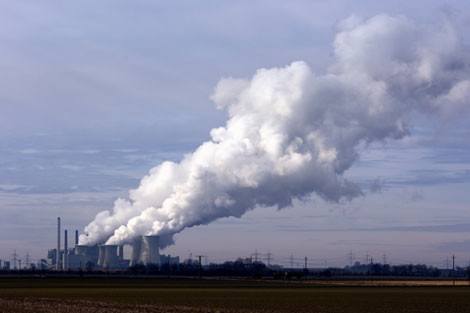Harvard, MIT researchers show the need for an improved approach to measuring pollution’s effects on human health
For immediate release: Thursday, April 17, 2014
Boston, MA – As the nation celebrates the 45th Earth Day on Tuesday, April 22, 2014, researchers from Harvard and MIT are calling for an improved approach to studying the link between pollution and human health. In an article published April 18, 2014 in the journal Science, the researchers note that in recent years, one-third to a half of all benefits gained from major regulations in the U.S. have come from the regulation of just one pollutant: particulate matter. With particulate matter playing such a vital role, it is critical to ensure that the estimated health benefits are based on the best available evidence.
“The first Earth Day reflected a growing need to improve protection of human health and our environment by relying on the best available science,” says Cass Sunstein, the Robert Walmsley University Professor at Harvard Law School and former administrator of the White House Office of Information and Regulatory Affairs. “We’re celebrating this Earth Day by renewing that commitment. The best available science now includes quasi-experimental evidence, on which there has been a great deal of recent progress and success.”
Quasi-experiments offer a new lens and a paradigm-shifting solution to longstanding challenges in measuring the relationship between pollution reductions and human health. Regulators have long relied on observational studies, which can be essential, but which might also produce inaccurate conclusions about the effects of pollution if they do not sufficiently control for both observed and unobserved variables, like smoking rates and socioeconomic status. Just as in a classic experiment, researchers using a quasi-experimental approach are able to compare outcomes between a treatment group and a control group. The status of the treatment group is determined by an accident, politics, a regulation, or some other action beyond the researchers’ control.
“Quasi-experimental studies have greatly deepened our understanding of causal relationships in a wide variety of fields – from labor and development economics to criminology and statistics – where progress had previously stalled,” says Michael Greenstone, MIT’s 3M Professor of Environmental Economics. “This revolution is just beginning in the field of environmental health and, as it takes hold, we will learn more about the environmental risks that we face and how to best protect ourselves.”
For example, in one study, Greenstone and his coauthors compared those living north of China’s Huai River – where the government has provided free coal to heat homes – to those living south of the river where such a policy never existed. While the two groups were otherwise similar, those in the north are set to lose 2.5 billion years of life expectancy due to pollution (More).
In another study coauthored by [[Francesca Dominici]], professor of biostatistics and senior associate dean for research at Harvard School of Public Health, she and her coauthors evaluate the effects of being targeted for pollution reduction in accordance with National Ambient Air Quality Standards (NAAQS) on mortality among elderly Medicare enrollees. They found the pollution rules did reduce Medicare mortality rates in those specified areas (More). The U.S. Environmental Protection Agency is required to review NAAQS every five years.
“Augmenting the large body of observational studies with evidence from quasi-experiments targeting existing regulatory actions will ensure that the highest-level evidence continues to support regulatory policies. The best science will need to rely on all available data and approaches,” says Dominici.
An increased focus on a quasi-experimental approach – as Dominici and Greenstone have undertaken – could ensure that regulations achieve the intended goal of protecting the public health of current and future generations.
More information, including a copy of the paper, can be found online at the Science press package at http://www.eurekalert.org/jrnls/sci. You will need your user ID and password to access this information. If you do not have a user ID and password, contact the AAAS Office of Public Programs at scipak@aaas.org, +1-202-326-6440.
For more information:
Todd Datz
617.432.8413
tdatz@hsph.harvard.edu
photo: iStockphoto.com
###
About Harvard School of Public Health
Harvard School of Public Health brings together dedicated experts from many disciplines to educate new generations of global health leaders and produce powerful ideas that improve the lives and health of people everywhere. As a community of leading scientists, educators, and students, we work together to take innovative ideas from the laboratory and the classroom to people’s lives—not only making scientific breakthroughs, but also working to change individual behaviors, public policies, and health care practices. Each year, more than 400 faculty members at HSPH teach 1,000-plus full-time students from around the world and train thousands more through online and executive education courses. Founded in 1913 as the Harvard-MIT School of Health Officers, the School is recognized as America’s first professional training program in public health.
